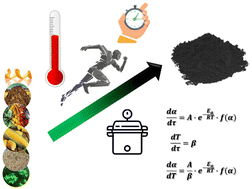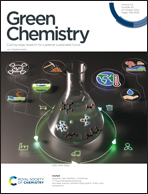Thermokinetics of production of biochar from crop residues: an overview
Abstract
The total annual production of agricultural biomass such as wood, corn cobs, leaves, and citrus peels, is estimated at 956 million tons (Mt). Since crop residues are by-products of agricultural production, crop residue collection does not compete with food crops for acreage and therefore, it does not negatively impact food prices. Moreover, it has the advantage of reducing the amount of waste, the disposal of which often becomes a serious problem despite natural sources. Biomass conversion becomes a very valid alternative to diversify energy sources and reduce global warming. Thermochemical treatment of biomass is a promising way to convert biomass into bio-oil, biochar, and gas. In recent years, interest in the conversion of plant biomass into biochar has increased because this carbonaceous material has interesting properties that guarantee applications in wastewater treatment, soil improvement, solid fuels, and energy. The processes performed to convert biomass into biochar are different and the most used are thermochemical processes: pyrolysis, torrefaction, hydrothermal treatment, and gasification. The studies of the thermokinetic parameters that control these processes are carried out using different methods that provide the necessary information for the applicability of the processes on an industrial scale. One of the objectives of the present review is to compare kinetic models in order to clarify the role of the conversion process and the effects of the process parameters on the final product. A comprehensive investigation of the thermokinetic parameters controlling the conversion of crop residues to biochar was conducted. The mathematical description of kinetic processes is usually performed using the Arrhenius equation and its derivatives to obtain the activation energies (Ea), the pre-exponential parameter, and the process mechanisms. While isothermal processes can be described using the model fitting method, isoconversional processes can be studied using both the model fitting method and model-free methods. The high complexity and diversity of the reactions involved could lead to the use of approximations. In this paper, an overview of the kinetic parameters determined for biochar production processes and the model used to determine them is given.

- This article is part of the themed collection: Green Chemistry Reviews


 Please wait while we load your content...
Please wait while we load your content...